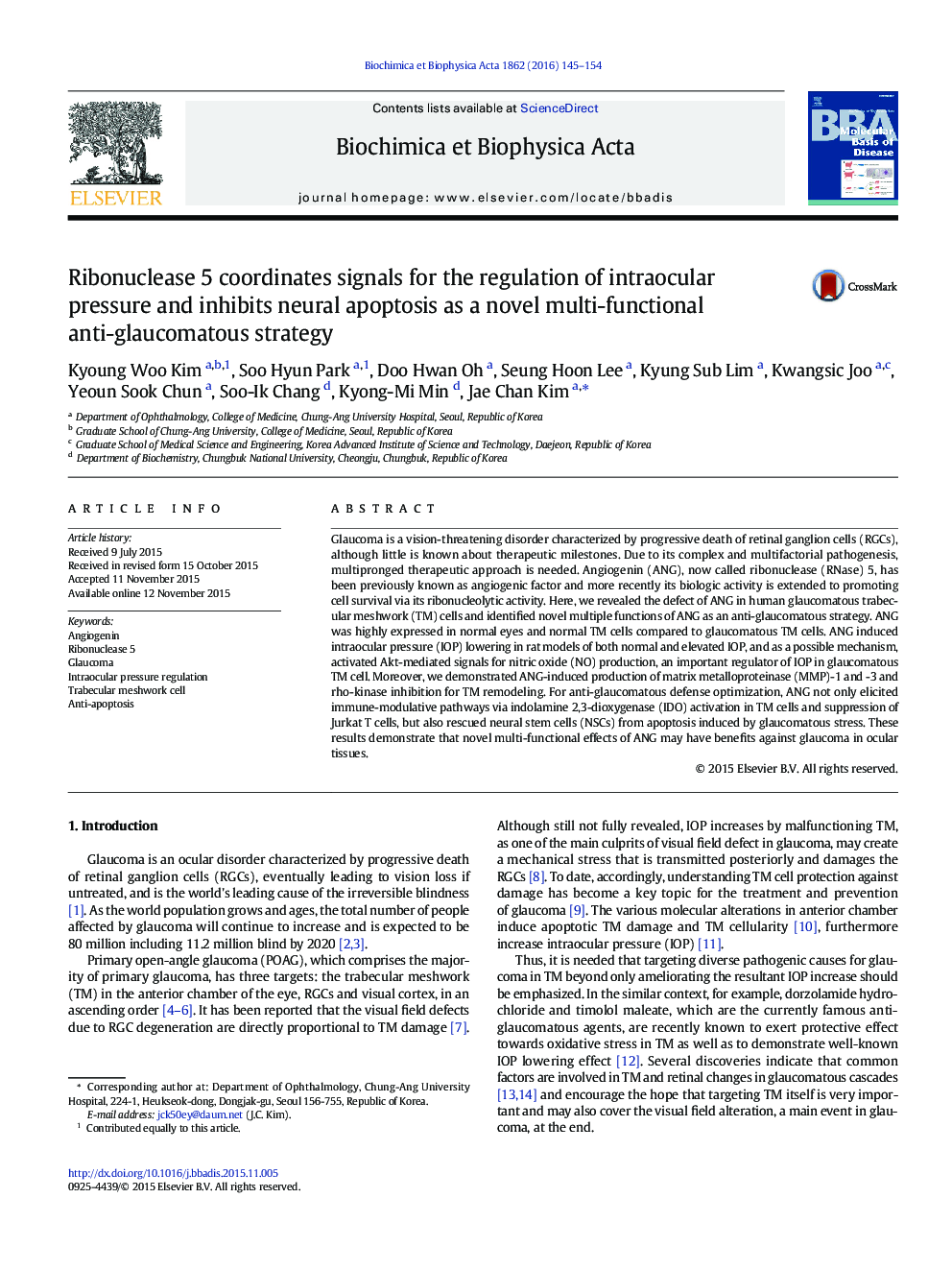| Article ID | Journal | Published Year | Pages | File Type |
|---|---|---|---|---|
| 1904478 | Biochimica et Biophysica Acta (BBA) - Molecular Basis of Disease | 2016 | 10 Pages |
Abstract
Glaucoma is a vision-threatening disorder characterized by progressive death of retinal ganglion cells (RGCs), although little is known about therapeutic milestones. Due to its complex and multifactorial pathogenesis, multipronged therapeutic approach is needed. Angiogenin (ANG), now called ribonuclease (RNase) 5, has been previously known as angiogenic factor and more recently its biologic activity is extended to promoting cell survival via its ribonucleolytic activity. Here, we revealed the defect of ANG in human glaucomatous trabecular meshwork (TM) cells and identified novel multiple functions of ANG as an anti-glaucomatous strategy. ANG was highly expressed in normal eyes and normal TM cells compared to glaucomatous TM cells. ANG induced intraocular pressure (IOP) lowering in rat models of both normal and elevated IOP, and as a possible mechanism, activated Akt-mediated signals for nitric oxide (NO) production, an important regulator of IOP in glaucomatous TM cell. Moreover, we demonstrated ANG-induced production of matrix metalloproteinase (MMP)-1 and -3 and rho-kinase inhibition for TM remodeling. For anti-glaucomatous defense optimization, ANG not only elicited immune-modulative pathways via indolamine 2,3-dioxygenase (IDO) activation in TM cells and suppression of Jurkat T cells, but also rescued neural stem cells (NSCs) from apoptosis induced by glaucomatous stress. These results demonstrate that novel multi-functional effects of ANG may have benefits against glaucoma in ocular tissues.
Related Topics
Life Sciences
Biochemistry, Genetics and Molecular Biology
Ageing
Authors
Kyoung Woo Kim, Soo Hyun Park, Doo Hwan Oh, Seung Hoon Lee, Kyung Sub Lim, Kwangsic Joo, Yeoun Sook Chun, Soo-Ik Chang, Kyong-Mi Min, Jae Chan Kim,
